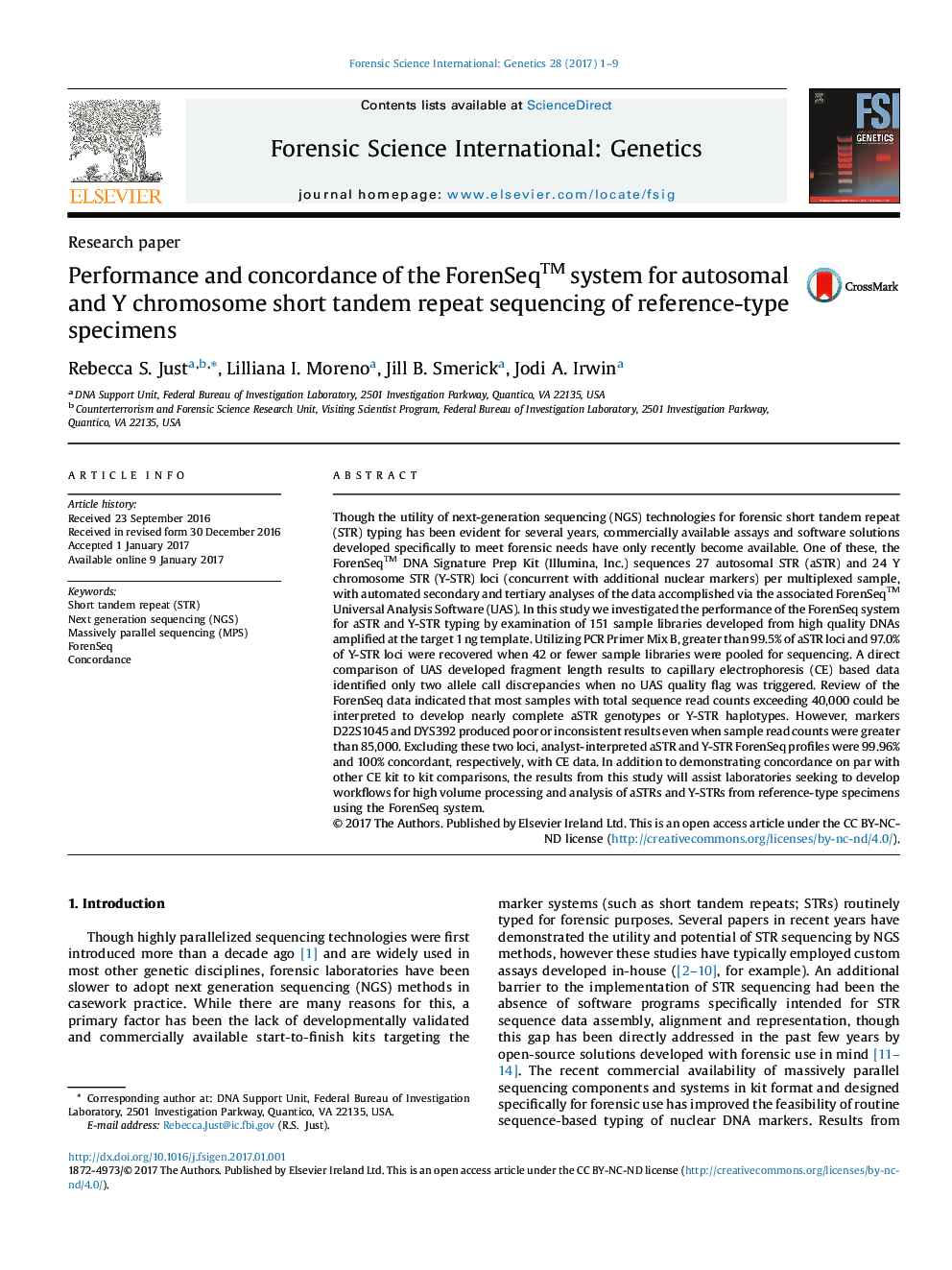| کد مقاله | کد نشریه | سال انتشار | مقاله انگلیسی | نسخه تمام متن |
|---|---|---|---|---|
| 6462816 | 1422150 | 2017 | 9 صفحه PDF | دانلود رایگان |

- â¥97% aSTRs and Y-STRs recovered from reference-type samples using PCR Primer Mix B.
- D22S1045 and DYS392 performed inconsistently even when sample read counts were high.
- Otherwise, aSTR and Y-STR ForenSeq results were â¥99.96% concordant with CE typing.
- Study data suggest it may be feasible to use the UAS as an expert system.
- Findings will assist development of workflows for high volume ForenSeq typing.
Though the utility of next-generation sequencing (NGS) technologies for forensic short tandem repeat (STR) typing has been evident for several years, commercially available assays and software solutions developed specifically to meet forensic needs have only recently become available. One of these, the ForenSeq⢠DNA Signature Prep Kit (Illumina, Inc.) sequences 27 autosomal STR (aSTR) and 24 Y chromosome STR (Y-STR) loci (concurrent with additional nuclear markers) per multiplexed sample, with automated secondary and tertiary analyses of the data accomplished via the associated ForenSeq⢠Universal Analysis Software (UAS). In this study we investigated the performance of the ForenSeq system for aSTR and Y-STR typing by examination of 151 sample libraries developed from high quality DNAs amplified at the target 1 ng template. Utilizing PCR Primer Mix B, greater than 99.5% of aSTR loci and 97.0% of Y-STR loci were recovered when 42 or fewer sample libraries were pooled for sequencing. A direct comparison of UAS developed fragment length results to capillary electrophoresis (CE) based data identified only two allele call discrepancies when no UAS quality flag was triggered. Review of the ForenSeq data indicated that most samples with total sequence read counts exceeding 40,000 could be interpreted to develop nearly complete aSTR genotypes or Y-STR haplotypes. However, markers D22S1045 and DYS392 produced poor or inconsistent results even when sample read counts were greater than 85,000. Excluding these two loci, analyst-interpreted aSTR and Y-STR ForenSeq profiles were 99.96% and 100% concordant, respectively, with CE data. In addition to demonstrating concordance on par with other CE kit to kit comparisons, the results from this study will assist laboratories seeking to develop workflows for high volume processing and analysis of aSTRs and Y-STRs from reference-type specimens using the ForenSeq system.
Journal: Forensic Science International: Genetics - Volume 28, May 2017, Pages 1-9